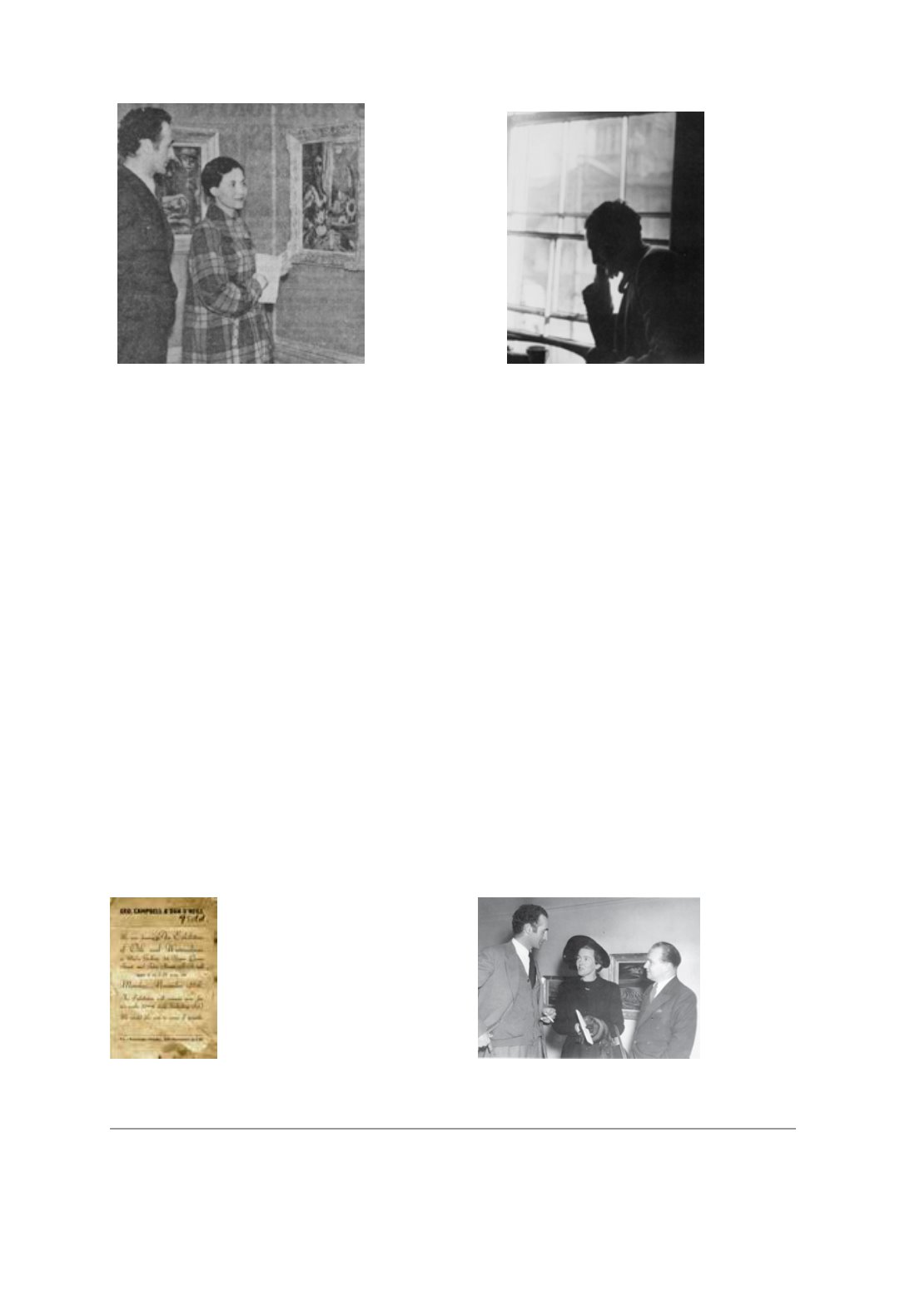

20
In 1943, O'Neill married Eileen Lyle and moved to Conlig, a former lead-mining village in
Co. Down. Following the birth of their daughter, Patricia, O’Neill regularly invited Campbell
and Dillon to stay with him. The artists often went on painting trips around the area. O’Neill
was highly experimental with glazes throughout his life but he didn’t experiment with abstract
work. Unlike Campbell, who was impatient and didn’t prepare boards,
27
O’Neill and Dillon
were meticulous about preparing the support for their works, an indication of the discipline
provided by their apprenticeships. From the early 1940s, O’Neill’s images largely related to
human emotion, birth, love, death and suffering. He also painted people he admired: ‘On
Reading Dear Theo’ was homage to Van Gogh.
The figure of equilibrium in this group of artists was Dillon, who often witnessed O’Neill
and Campbell’s fiery temperaments. Both romantics, Campbell and O’Neill only held one
joint show together in November 1944 at the Mol Gallery. Confiding in James Macintyre,
28
Dillon told his friend that ‘neither of them was above heaping ridicule on the other’s work’.
29
Criticism within the group was, however, a positive aspect to their friendship: ‘their work
seemed to spark off each other in a healthy competitive way. When one did collage they all
would.’
30
27
By 1947 all artists were using hardboard from Sweden.
28
Campbell met James MacIntyre after the Blitz in Belfast.
29
MacIntyre, op cit., p. 103.
30
Correspondence with Bernard Jaffa, 15 October 2014.
fig.24: Daniel O’Neill with wife Eileen at his
exhibition at Waddington’s, 1949
fig.25: Daniel O’Neill in ‘Campbell’s Café,’ 1948.
Photo: Arthur Campbell. © Artist’s Estate.
fig.26: Invitation to George
Campbell and Daniel O’Neill’s
joint show, November, 1944
fig.27: Daniel O’Neill with Dr and
Mrs. JB Kearney



















